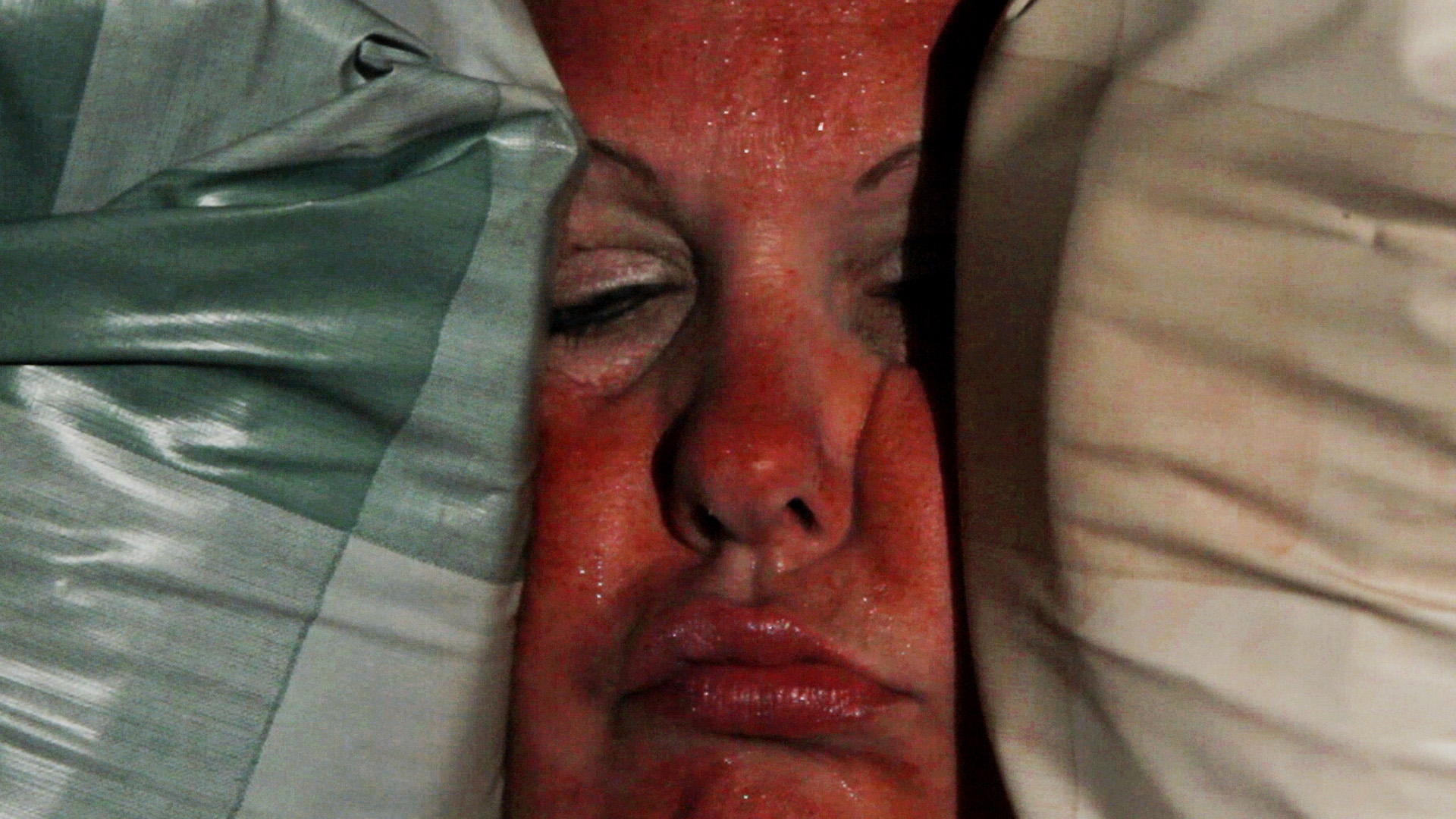To coincide with a solo exhibition at the Common Guild (8 April – 19 June) Akram Zaatari’s Twenty-Eight Nights and a Poem (2015), is to be screened at Glasgow Film Theatre (3 April). The feature-length film is a paean to analogue photography within the context of Lebanese culture in the 1960s and 70s. Through his ongoing research in the archives of studio photographer Hashem El Madani, Zaatari frames El Madani’s images of daily life (shopkeepers, couples, men posing with big guns) and portrays the role of documentary photography in fashioning an identity for a country that was undergoing a moment of modernisation.
Cultural and social identity is always at the core of Sol Calero’s work too and we’ll expect nothing less from Desde el Jardin (8 April – 21 May) commissioned by David Dale Gallery, which promises to bring the garden into the gallery in an immersive site-specific installation. This year, Aaron Angell will be doing the exact opposite, bringing the gallery to the greenhouses: Angell’s sculptures will be exhibited alongside readings by poets D.M. Black and Lucy Mercer at Glasgow Botanic Gardens and organ recitals at Kelvingrove Art Gallery and Museum (8–25 April).
Perhaps it’s a symptom of our excessive daily exposure to technology and industry (cue ringing, bleeping, *silently buzzing* demands) but the festival seems to be peppered with nature-conscious projects. Cosima von Bonin’s exhibition Who’s Exploiting Who In The Deep Sea? at GoMA (8 April – 7 August) will constitute a collection of underwater characters that – call it critter teamwork – come together to subvert constructions of feminism through textile, video, music and sculpture. Von Bonin’s search of what it means to be a human being, and the parallels between our subconscious and the deep sea asks us to rethink our positions in (and on) the human and natural world.
Parallels between our subconscious and the deep sea asks us to rethink our positions in (and on) the human and natural world
The traveling archive of Open Jar Collective’s Soil City (8–25 April) might be a different kettle of fish but it has similar ideas rooted in the human condition. Aimed at connecting Glaswegians (and festival visitors) with the city’s earthy landscape and history, the longterm project invites visitors to reconsider the value of soil. In collaboration with Bitter Rose and Soil City, Dutch artist Jasper Coppes will deliver a talk at Govanhill Baths (21 April), where he seeks to question our ideas about belonging and cultural roots against how we value the geological landscape of the area we might call ‘home’.
Glasgow, with an industrial legacy spanning centuries, was home to metalworks, textiles factories and shipbuilding yards, many of which now house arts and cultural projects. This year Tramway, originally the city’s tram terminus – now contemporary art space, will host a group exhibition (8–25 April) including Lawrence Lek, Alexandra Bircken, Amie Siegel, Sheila Hicks and Mika Rottenberg, whose artworks stem from the concepts of manufacturing, material culture and design. Referring also to engineering, albeit of a more domestic kind, will be Matthew Smith’s solo show, Pussycat, at Koppe Astner (7 April – 21 May) where plumbing and fashion are reoccurring motifs.
Speaking to the pioneering use of concrete for the construction of Civic Room (formerly the British Linen Bank, 1746), André Komatsu’s Disseminação Concreta (2006), a prostrate figure of clothes stuffed with rubble, addresses the role of industrial concrete manufacturing, its effect on the modernisation of cities and, by extension, the social and political impact of its use in the urban environment (5–25 April). In a talk on 11 April the São Paulo-based artist will be in conversation with Dr Jonathan Charley (University of Strathclyde) to ask ‘Is progress just an illusion or idea to cover reality?’
Concrete is dusty stuff and in an attempt to segue neatly into the next suggestion we’d recommend attending The Dust of Everyday Life symposium at the Centre for Contemporary Arts (20 April), which brings together artists and scientists to discuss the status of mental health. And if you’re still interested in the intersections between art and science, you can always attend The Two Cultures talk (23 April), hosted by ArtReview contributing editor Brian Dillon with artists Christine Borland and Roger Hiorns, where the trio will be discussing the interdisciplinary nature of the humanities and sciences.
Architecture is often said to be a perfect balance of art and science, but what do we say when art behaves architecturally? Monika Sosnowska’s sculptures are described as ‘architectonic structures’ and with a solo show at the Modern Institute (8 April – 25 May) the artist weighs in on the modernist debate surrounding the relationship between the two disciplines. If you’re looking for something a little more ‘ethereal’ or ‘untethered’, you might want to head over to The Briggait where Heather Lander and Simon Harlow will be presenting Materialia, a video installation and sculptural work that will focus on the more formal elements of architecture (8–25 April). And at last, we come full circle, back to the medium of photography and the identity of a place, explored in Christine McBride’s exhibition (8–25 April) of Patagonia-based photo series Bound (2015) at the Glasgow School of Art.
